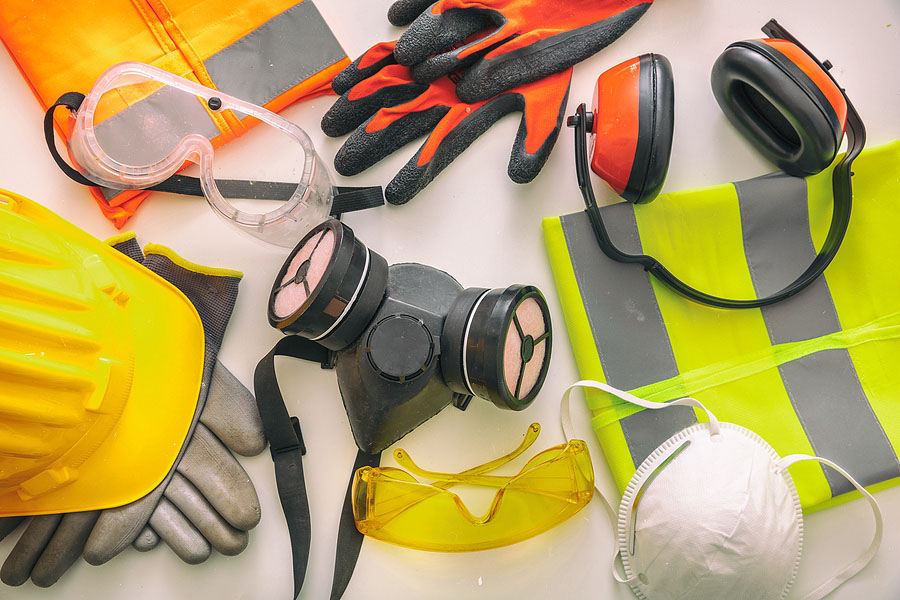In today's fast-paced and often hazardous work environments, the importance of personal protective equipment (PPE) cannot be overstated. PPE is the barrier between individuals and the potential risks they face daily, whether on a construction site or within the sterile confines of a hospital. In this comprehensive guide, we explore the critical role of PPE, examine its evolution, and underscore the necessity of adhering to best practices for its use across various professions, with a particular focus on construction workers and healthcare professionals.

Introduction to Personal Protective Equipment (PPE)
PPE stands for Personal Protective Equipment, encompassing a wide range of gear designed to protect users against health and safety risks at work. This can include items such as helmets, gloves, eye protection, high-visibility clothing, safety footwear, and respiratory protective equipment (RPE).
Importance of PPE in Different Professions
Construction
In the construction industry, the workplace is riddled with potential hazards, from falling debris to loud noise, requiring stringent safety measures. PPE is the first line of defence, protecting workers from physical injury.
Healthcare
For healthcare professionals, PPE is integral to preventing the spread of infections and protecting both patients and medical staff from contagious diseases. The COVID-19 pandemic has underscored its significance, highlighting PPE as a critical component in the fight against the virus.
Types of Safety Wear and Their Purposes
Safety wear varies widely, tailored to mitigate specific risks associated with different tasks. For instance, hard hats in construction protect against head injuries, while medical gloves in healthcare settings prevent cross-contamination. Understanding the purpose of each PPE type is essential for selecting the right gear for your needs.
The Evolution of PPE: From Past to Present
The concept of PPE is not new; however, its sophistication and effectiveness have significantly evolved. From rudimentary protections like leather gloves and woollen masks to today’s advanced materials offering unmatched safety, the history of PPE reflects human ingenuity and an unyielding commitment to safety.
Understanding PPE Standards and Regulations
Various countries and regions enforce standards and regulations governing the manufacture, testing, and use of PPE. Familiarity with these regulations is crucial for workers and employers alike, ensuring compliance and the effectiveness of protective gear.
Best Practices for PPE Use in the Workplace
Proper use of PPE goes beyond simply wearing it. It includes understanding its limitations, ensuring a proper fit, and being aware of the need for additional precautions. Education and training are fundamental to maximising the protective benefits of PPE.
PPE Maintenance and Replacement Guidelines
Maintaining PPE is paramount for ensuring its continued effectiveness. Regular inspection, cleaning, and replacement, when necessary, can extend the life of safety wear and protect users more effectively.
Future Trends in Safety Wear and PPE Technology
Innovation in PPE is ongoing, with emerging technologies like wearable tech, smart textiles, and augmented reality (AR) set to redefine safety wear. These advancements promise enhanced protection, increased comfort, and improved user compliance.
Key Components of PPE: Ensuring Worker Safety
Personal Protective Equipment (PPE) is essential in environments with significant occupational safety concerns, such as construction sites and healthcare facilities, to protect workers from workplace hazards. PPE stands as the last line of defence against the myriad hazards present in these settings, ranging from biological agents and electrical hazards to physical impacts and chemical exposures. A comprehensive risk assessment is crucial to identify the specific needs for protective clothing and equipment, thereby minimising exposure to potential dangers.
Respiratory Protection
Respiratory protection, such as masks and respirators, is vital for workers exposed to harmful dust, fumes, vapours, or biological hazards. These devices are critical in healthcare settings, especially when dealing with airborne diseases, to safeguard healthcare workers' health.
Foot and Leg Protection
Safety boots and footwear designed to resist punctures, impacts, and slips are fundamental for foot and leg protection. They not only prevent direct injuries but also shield workers from electrical hazards.
Body Protection
Body protection involves wearing appropriate protective clothing, including full body suits in certain cases, to defend against chemical, physical, or biological exposure. The type of body protection required depends on a detailed analysis of the potential hazards in the workplace.
Hand and Arm Protection
Hand and arm protection, through safety gloves and arm guards, is necessary to handle materials that might abrade, cut, tear, or puncture the skin. This category also includes protection against chemical burns and temperature extremes.
Head and Eye Protection
Head protection, typically involving helmets and hard hats, shields workers from falling objects and impacts. Similarly, eye protection is crucial, with safety glasses and safety goggles being mandatory in environments where chemical splashes, flying debris, or particulate matter pose a risk to the eyes. The American National Standards Institute (ANSI) sets rigorous standards for head and eye protection to ensure optimal safety.
Hearing Protection
In environments with hazardous noise levels, hearing protection such as earplugs and earmuffs is indispensable to prevent long-term hearing loss. The Occupational Safety and Health Administration (OSHA) mandates the use of hearing protection in noisy work environments to safeguard workers' auditory health.
Conclusively, the proper selection and use of PPE, guided by the standards of the American National Standards Institute and health administration practices, are fundamental to minimising exposure to hazards and ensuring the safety and well-being of workers across various sectors.
Conclusion: Emphasizing the Role of PPE in Ensuring Safety and Health in Work Environments
The role of PPE in safeguarding the health and safety of workers cannot be understated. Whether braving the heights of a construction crane or the frontline of a pandemic, PPE remains an indispensable ally in the quest for a safer workplace. By adhering to best practices and remaining informed about the latest developments in safety wear, workers across all sectors can minimise their exposure to hazards and focus on their work, secure in the knowledge that they are protected.
